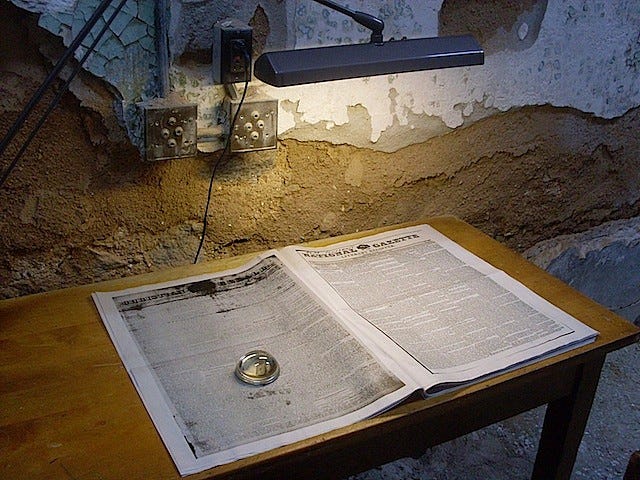Lisa Bateman, Next Year (2012–2014). Installation: Offset print on newspaper broadsheet, 141 pages, reading magnifier, chain, furniture. Eastern State Penitentiary, Philadelphia
A few weeks ago, Chris Gelardi, a journalist covering New York State’s criminal-legal system for the nonprofit news site NYS Focus, learned from a volunteer working with incarcerated artists that the New York State Department of “Corrections and Community Supervision” had enacted a sweeping new directive constraining publication for writers who are in prison. NYS Focus is one a small but hardy band of news outlets, some nonprofit (Gotham Gazette, Gothamist, The City), some not (Hell Gate, NY Politico), endeavoring to cover city and state-level politics in New York after both the New York Times and (after a brief effort) The Wall Street Journal shelved their local sections and focused on a national subscription audience. New York’s capital Albany is a notoriously murky ecosystem that thrives on inattention. New York readers are lucky, though, in having a strong historic culture of journalism resisting, as Gelardi did on that day, the ruination of local news and its aftermath, impunity (see former New York Times and Washington Post media observer Margaret Sullivan’s recent book, Ghosting the News: Local Journalism and the Crisis of American Democracy).
Keep reading with a 7-day free trial
Subscribe to Book Post to keep reading this post and get 7 days of free access to the full post archives.



